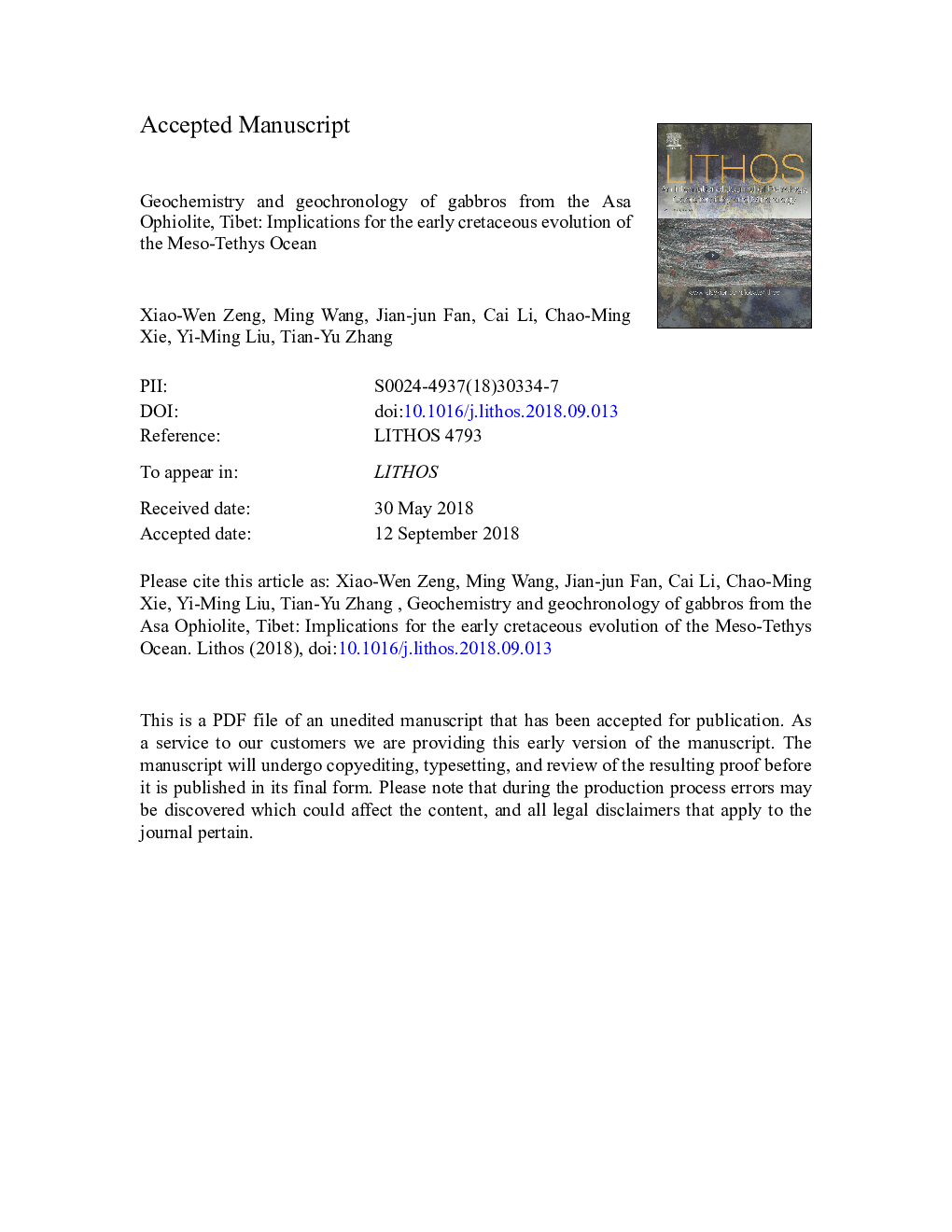| Article ID | Journal | Published Year | Pages | File Type |
|---|---|---|---|---|
| 10224365 | Lithos | 2018 | 72 Pages |
Abstract
The formation of the Shiquanhe-Namco Ophiolite Mélange Zone (SNMZ) and its relationship to the Bangong-Nujiang Suture Zone (BNSZ) in central Tibet are key to understanding the Mesozoic tectonic evolution of the Meso-Tethys Ocean. This study presents zircon UPb geochronological, whole-rock geochemical, and LuHf isotopic data for gabbros from the Asa Ophiolite of the central SNMZ. Four gabbros yielded zircon UPb ages of 117.3â¯Â±â¯0.6, 117.3â¯Â±â¯0.5, 115.3â¯Â±â¯0.5, and 114.9â¯Â±â¯0.6â¯Ma. Whole-rock geochemical analyses indicate that these rocks are tholeiitic, enriched in light rare earth and large-ion lithophile elements, and depleted in Nb and Ta. These gabbros have geochemical affinities to island arc and mid-ocean ridge basalts, suggesting that they originated in an oceanic back-arc basin. Whole-rock geochemical data and isotopically juvenile εHf(t) values suggest that the gabbros were derived from a depleted mantle source that was enriched by slab-derived fluids and partial melts of sediment. Our data, combined with previous work, suggest that the BNSZ records the Early Cretaceous subduction of the Meso-Tethys oceanic crust and that the SNMZ represents a back-arc basin. During the Early Cretaceous, the Meso-Tethys Ocean remained open and contained an intra-oceanic subduction system and back-arc basin.
Related Topics
Physical Sciences and Engineering
Earth and Planetary Sciences
Geochemistry and Petrology
Authors
Xiao-Wen Zeng, Ming Wang, Jian-Jun Fan, Cai Li, Chao-Ming Xie, Yi-Ming Liu, Tian-Yu Zhang,
